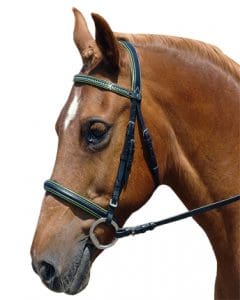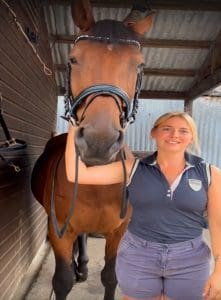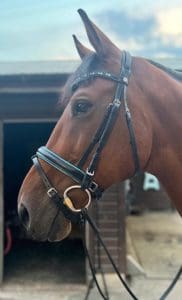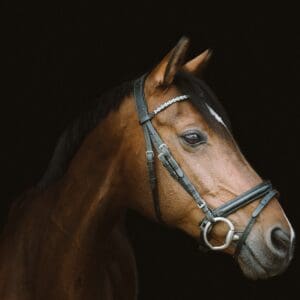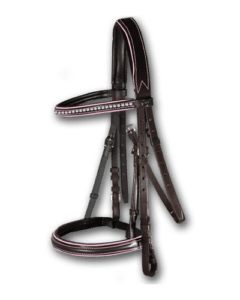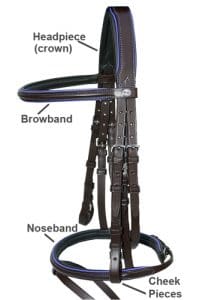**  USA Customers: Enjoy up to $800 Tax Free Imports - Even with Tariffs, we're still better value than US stores! **
USA Customers: Enjoy up to $800 Tax Free Imports - Even with Tariffs, we're still better value than US stores! **
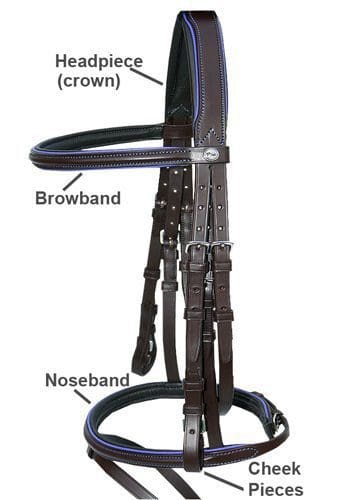
Are you intrigued by the intricate components of a bridle and their significance in horse riding?
Choosing the right bridle for your horse can be daunting amidst the myriad of options available. Whether you’re into jumping, dressage, or leisure riding, each discipline requires a specific type of bridle. Yet, navigating through the variations in style, color, and configuration can be overwhelming.
To ease your decision-making process, it’s crucial to grasp the fundamentals of bridle anatomy, understand their functions, and explore how components can be effortlessly interchanged without investing in multiple bridles. Let’s delve into the world of horse bridle parts and unravel their mysteries.
In General, a horse bridle comprises seven integral pieces that fit together to form the bridle. They are;
Ensuring comfort and stability, the first parts of a bridle is the headpiece, also known as the headstall or crown piece, it sits on top of the horse’s head behind the ears and combined with the browband keeps the bridle in position. The leather splits into two straps, one containing the cheekpieces and the other the throat latch (also known as the chin strap), whilst the third piece of leather running underneath the headpiece provides the connection to the noseband.
Opting for a padded headpiece offers additional protection over the horse’s sensitive poll area, cutaway design elements that ensure a secure fit behind the horse’s ears, ensuring utmost comfort when being ridden.
Headpieces are made in different lengths depending on the size of the animals head. At Pink Equine all parts of a bridle can be interchanged or custom made to ensure an accurate fit for the horse.
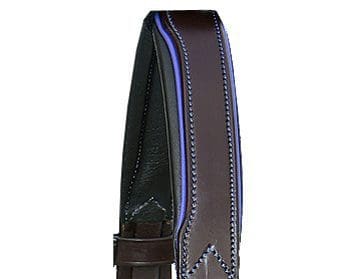
The Browband is the part of a bridle that goes over the horse’s forehead. It works in conjunction with the headpiece to keep the bridle in the correct place. The browband is not adjustable so it’s important that you choose the correct browband size.
A well-fitting browband should sit across the horse’s forehead, below the base of the ears in a position that does not cut into them and should not droop down. You should be able to fit no more than two fingers underneath the browband.
Whilst function is important, the browband is a great way of highlighting the best features of your horse’s head. There are many styles of horse browbands you can choose from, such as ones with plain padding, or coloured piping and stitching, browbands with an array of coloured crystal stones, thin wave or v-shaped browbands with crystals set onto the front and browbands with larger Swarovski crystals.
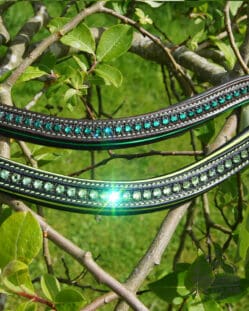
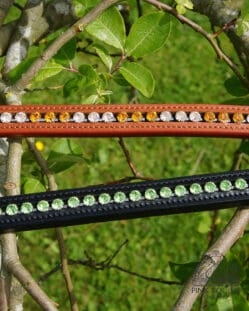
All English bridles have two cheek pieces, one on either side and are important parts of a bridle. They play a crucial role because they connect to the horse’s bit and regulate the amount of communication the rider has with the horse. It is important that the cheek pieces have plenty of length adjustment up or down, to ensure the bit is sitting in the right position in the horse’s mouth.
You may find you need a different size of cheekpiece compared to the rest of the bridle. Many mass produced bridles come with standard-size cheekpieces and this can be a problem, if your horse or pony requires longer or shorter ones. Fortunately on all Pink Equine bespoke bridles, we are happy to mix and match parts of a bridle to ensure the best-fitting bridle for your horse or pony.
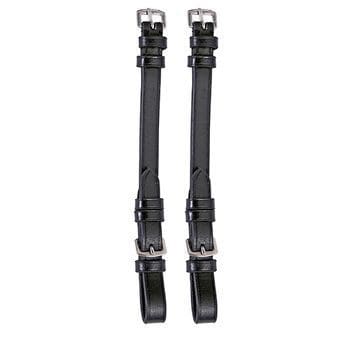
With a plethora of options available selecting the right noseband is crucial. From English Plain to Grackle, each style of noseband serves a distinct purpose, catering to your horse’s preferences and riding requirements. For example for normal use, leisure riding etc, you may choose a plain or flash noseband, whereas when jumping you may need more control and use a grackle noseband.
Thankfully, with Pink Equine bridles, you can mix and match nosebands, which helps reduce the cost of owning multiple bridles. Below, you’ll find a brief overview of some commonly used nosebands.
Also called a Cavesson Noseband, it is commonly used in a snaffle bridle and consists of a single padded band that goes around the horse’s nose. It provides a comfortable fit without restriction to the horse’s mouth. It is ideal for horses who are generally quiet in the mouth and don’t generally fuss with the bit.
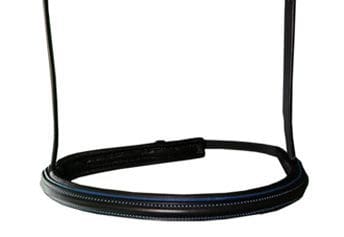
Also known as a “Hanovarian Drop” or simply a Flash, it has an additional strap to the Plain Noseband that does up under the bit and around the mouth, it can be fully adjusted to different degrees depending on how much control you require over the horse’s mouth. The additional Flash strap is used for horses who may open their mouths or attempt to put their tongue over the top of the bit, this is the only difference between the Flash and Plain Noseband.

Also known as a “pull back” or Crank Cavesson. Very similar to the English Plain Noseband and is commonly used on Double bridles and Dressage Bridles. The only difference is that the back has a padded section with a buckle strap that provides additional tightening if required. Suitable if you require a little more control over the horse’s mouth. Helpful in preventing the horse from “crossing his jaw” thus evading contact through the bit. Care should be taken to ensure this is not over-tightened.
Also known as a “pull back” or Crank Cavesson. Very similar to the English Flash. The difference is that the back has a padded section with a buckle strap that provides an additional degree of tightening. It is ideal if you require a little more control over the horse’s mouth where a Flash Noseband would not be advisable or is not allowed in competition. It helps prevent the horse from “crossing his jaw” thus evading contact through the bit.
Care should be taken to ensure this is not over-tightened. The name ‘Crank/Pull Back’ sounds severe, however, it can equally be used without being tightened – as a plain nose band. It’s also worth considering if your horse has sensitive skin, having the additional padding at the back is preferable.
The additional Flash strap is used for horses who may open their mouths or attempt to put their tongue over the top of the bit, this is the only difference between the Flash and Plain Noseband.
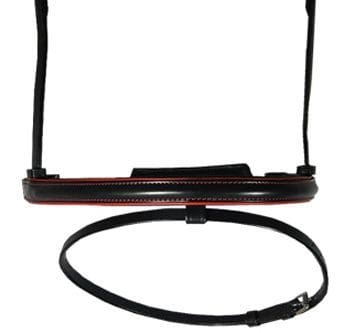
The Grackle Noseband, also known as the “Cross-under” or “Figure Eight” is also designed to prevent a horse from opening his mouth and crossing his jaw. The front crossover point of the Grackle is the main pressure point. The straps pass through a slotted leather circle, which on quality bridles has a removable sheepskin back. This is very important as the sheepskin can then be easily washed and cleaned to avoid it becoming hard through use and chaffing the horse’s delicate nose area.
Popular with show jumpers and eventers, because they allow the horse to breathe more easily, the grakle should be fitted so that the sheepskin part sits in the centre of the nose and the two crossover straps sit on the hard bone part going down, avoiding the fleshy parts of the nose.
It is ideal if you have a horse who doesn’t like the position of an English or Swedish Nose band, or the thickness of a Nose band as most Grackle’s have much narrower straps.
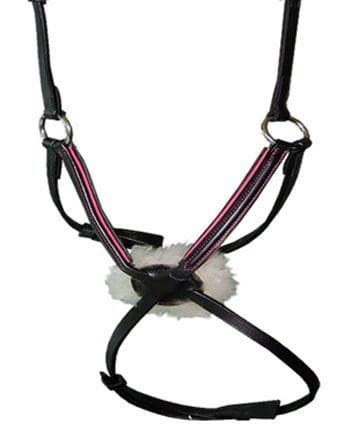
The Drop Noseband prevents a horse from opening his mouth to resist the contact but has a more definite action than the Flash. Some horses respond well but others resent it. The low-pressure point in front and pressure in the curb groove at the back are said by some to encourage a horse to lower his head. It can also act to stabilize the bit (and lower jaw) without pulling the cheeks into the molars as a cavesson/plain noseband can.
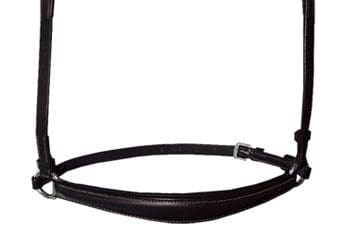
Most bridles are made with one strap and one buckle. However some (like our own bridles) are available with two buckles on the noseband allowing you to change nosebands without removing the bridle completely, a useful option if you need different nosebands for different disciplines (or phases, if Eventing).
We have also found the two-buckle system particularly useful for young horses that are bridle shy or have not been bridled before, as you can put the bridle on the horse in parts (carefully of course!).
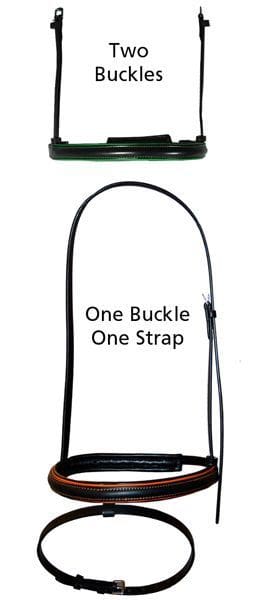
The bit is a crucial piece of horse tack because it is attached to either side of the cheekpieces and fits in the horse’s mouth. The reins are also attached to the bit and together with the riders legs provide the horse with signals or instructions as to where to go and how fast.
Movement of the reins applies pressure to the bit in the horse’s mouth and assists with steering and braking, although an accomplished horse rider on an experienced horse should need to use very little pressure on the bit.
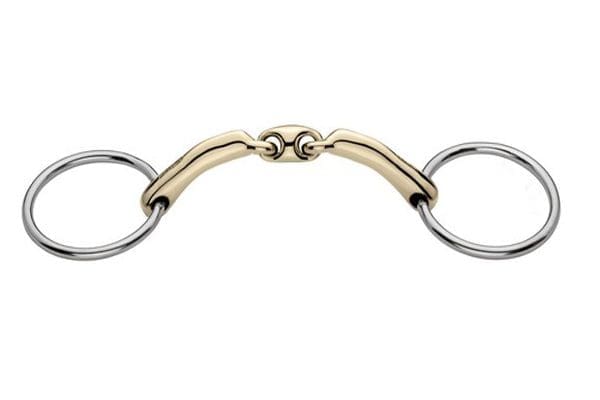
Reins are available in a variety of styles, with all leather or rubbers grips, and together with the cheekpieces are attached to the horse’s bit. If the fastenings used are billets, they should be attached to the inside. If the reins are fastened with more common buckles, they should be fastened on the outside.
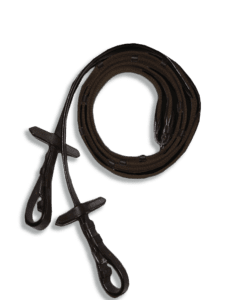
The throatlatch does up underneath the horse’s chin and keeps the bridle balanced and in place. Properly adjusting the throatlash is crucial for your horse’s comfort and safety. When fastened, there should be enough space for four fingers between the throatlash and your horse’s jawbone. If it’s too tight, it can constrict the windpipe, causing discomfort, while if it’s too loose, the bridle may not stay securely in place. Maintaining the correct fit ensures your horse remains comfortable and allows the bridle to fulfill its purpose effectively.
In conclusion, understanding the various parts of a bridle is essential for every equestrian. It enables riders to make informed decisions when selecting the right style of bridle for their horse, considering factors such as discipline, fit, and functionality. At Pink Equine, all our horse bridles are customisable and we take pride in the fact that riders are able to mix and match bridle parts with different sizes. This ensures that every horse can have a bridle tailored to its unique needs and dimensions, promoting comfort, performance, and overall well-being.
At Pink Equine, we don’t just offer custom horse tack; we’re dedicated to building a vibrant community in two exciting ways! Delve into more of our insightful featured articles below, including this one, for valuable tips and knowledge. And don’t miss out on joining our Pink Equine club – it’s completely free! As a member, you’ll gain access to exclusive competitions, stay informed with our newsletter, be the first to explore new ranges, and benefit from special discounts. Don’t wait any longer – join our community today and be part of the excitement!
For more information on horse bridles please view the articles below.
